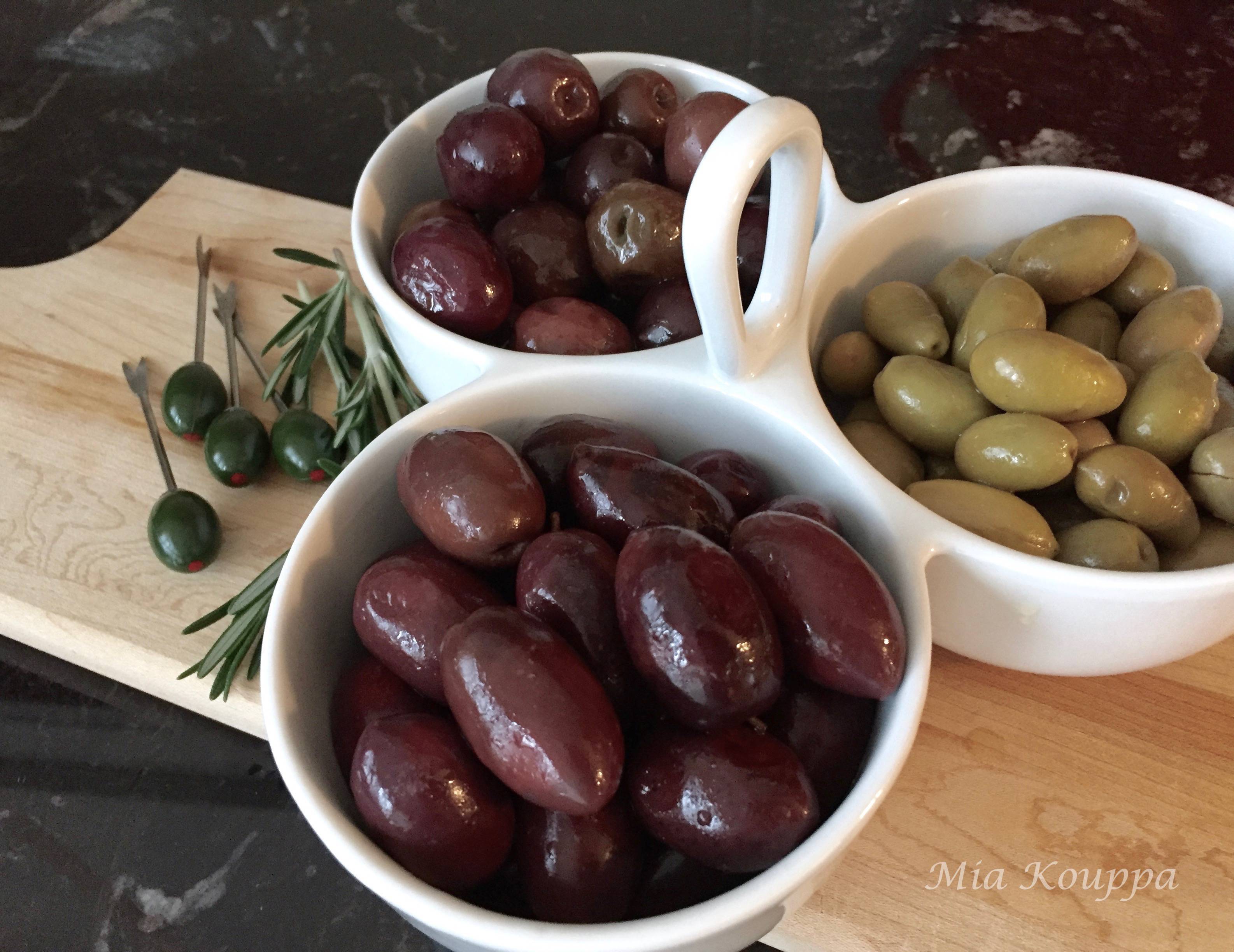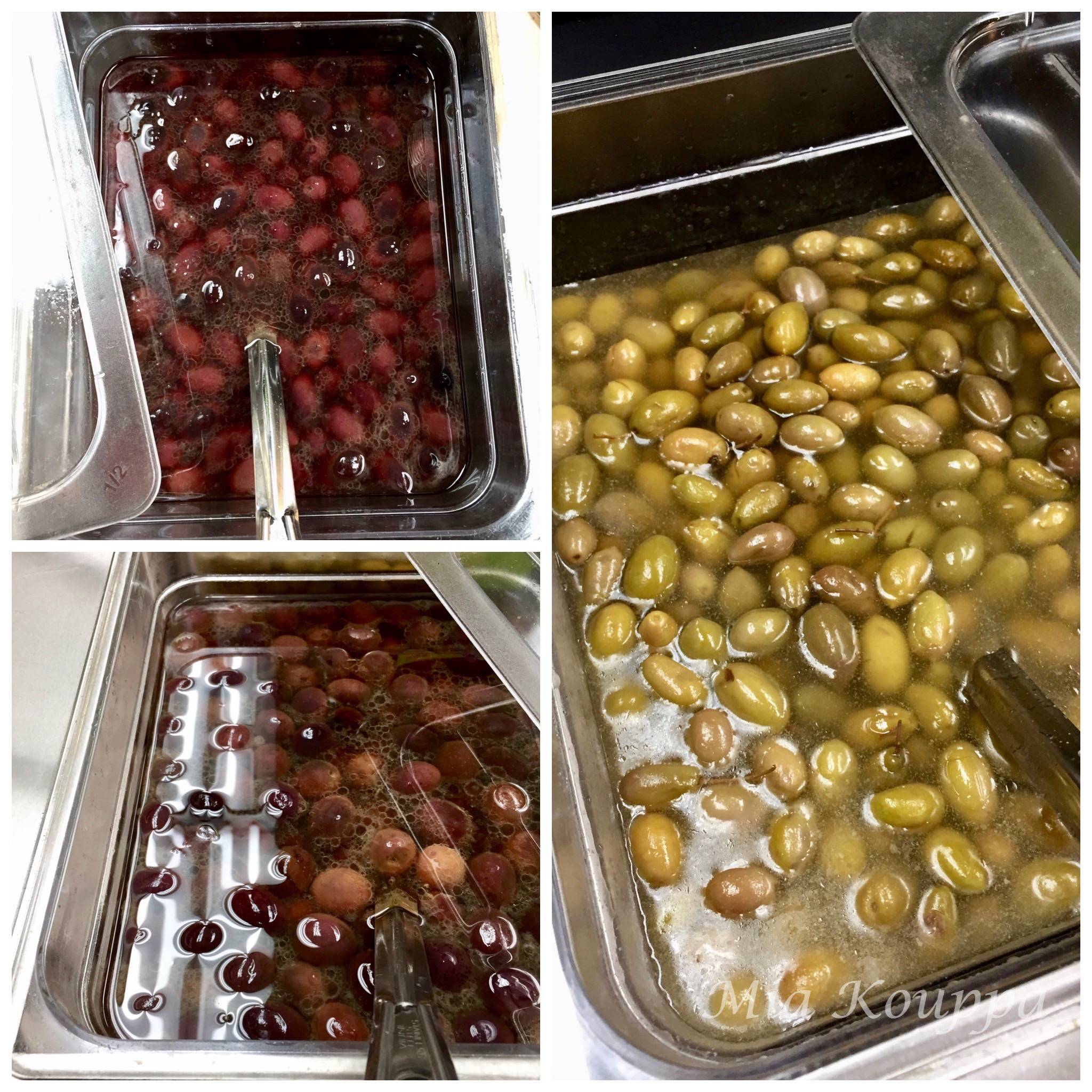Your cart is currently empty!

Taking the guesswork out of Greek cooking…one cup at a time

Is there any other food which symbolizes Greek culture, tradition and lifestyle as much as the olive? We don’t think so. For thousands of years the olive has played a role in the hearts, minds and souls of Greeks. There are a number of myths which speak to the importance of the olive tree, and our favourite is the story of Poseidon and Athena who were both vying for rule of the city state of King Cecrops. In a contest of sorts Poseidon, God of the sea, offered to the people of the city state a salty well of water next to the Acropolis. Athena, the Goddess of wisdom, stuck her javelin into the rocky ground and from there grew an olive tree. The people of the city realized that this tree would provide them with fruit, oil and wood, a much better deal than Poseidon’s salty well. And so, victory was hers, and the city of course, was named Athens, after her. The story goes that this was the first olive tree planted, ever, in the world. Today, some accounts tally the total number of olives trees (botanically referred to as olea europaea) in Greece to be near 120,000,000. Talk about exponential growth.
The average life expectancy of an olive tree is between 300 – 600 years, with many living up to 1,000 years! Many people claim that the oldest olive tree is 5,000 years old and is found in Pano Vouves in Kolymvari, Chania. Can you imagine!? If you happen to live in the area, send us a picture! The cultivation of olives dates back several millennia, and in many ways the technique of harvesting the fruit has not changed dramatically. Olives are grown for their oil (a future post) and their fruit and the harvest is often a family and community affair.
Olives are staples in the Greek pantry. Sophocles apparently referred to the olive tree as ‘the tree that feeds children’ and so perhaps it is not surprising that Greek children grow up eating olives as snacks, developing their refined tastebuds from an early age. No matter what meal is being served, or what time of day it is, olives usually find their way to the table.

Here are a few fun facts about olives:
Olives are drupes! No…that is not an insult! A drupe is a fruit with a central stone containing the seed. Other drupes are plums and cherries.
There are no green olive trees! The colour of the olive is indicative of their level of ripeness when harvested, with green olives being un-ripe during picking time. If left on the tree these same olives will change colour and can ultimately turn a vibrant red / purple or deep black when fully ripe.
You really shouldn’t eat an olive straight from a tree. Olives contain oleuropein, a compound which gives them an extremely bitter flavour. For this reason, all olives need to be cured before eating. This curing process is a type of fermentation, turning the olives’ natural sugars into lactic acid. There are several ways to cure an olive and these include:
Brine curing where fully ripened olives are gradually fermented in brine (salt water) for up to a year.
Water curing which is a long, time consuming and expensive series of soaking and rinsing the olives in water.
Dry-curing where olives are packed in salt for months. The salt pulls the moisture and bitterness out of the olive. The salt is removed and the olives are then soaked in olive oil.
Lye-curing which is a large commercial process in which olives are soaked in an alkaline lye solution. Although easy and relatively inexpensive, this does not produce very happy olives. They tend to have a bit of a chemical aftertaste.
Sun or air curing is a time consuming, costly, and therefore uncommon method whereby olives are fermented on the tree branch before being picked or laid out in the sun once harvested in order to dry.
There are about 100 different types of olives in Greece, most of which are ‘oil olives’ meaning that they are used to make olive oil. Otherwise, there are several popular varieties of ‘table olives’, for eating. Of all the varieties of olives found in Greece, guess what does not make the list; those black olives with the seed removed which taste a little bit like bland plastic which you buy in a can. Now, we don’t want to come across as olive snobs, but if those are the only olives you have every eaten, and you think you hate olives, think again. Here are some common Greek olive varieties you can try which may just make you an olive lover.
Kalamata olives
 These most famous Greek olives are named after the city of Kalamata, Messinia. Kalamata olives in the European Union are protected with PDO (protected designation of origin) status. They are typically harvested by hand in order to protect their sensitive, deep purple and shiny skin. Their shape is almond and they are often preserved in red wine vinegar, red wine or olive oil and are split down the middle. Their flavour is rich and fruity. It is no wonder that they are often referred to as the ‘king (or queen) of Greek table olives’.
These most famous Greek olives are named after the city of Kalamata, Messinia. Kalamata olives in the European Union are protected with PDO (protected designation of origin) status. They are typically harvested by hand in order to protect their sensitive, deep purple and shiny skin. Their shape is almond and they are often preserved in red wine vinegar, red wine or olive oil and are split down the middle. Their flavour is rich and fruity. It is no wonder that they are often referred to as the ‘king (or queen) of Greek table olives’.
Conservolia variety
The most plentiful group of olives in Greece, the varieties which fall into this category include the Amphissa, Agrinio, Stylida, Volos and Atalanti olives. They are large and oval shaped. They range in colour from green to dark red to bluish black. The Amphissa olives from the hills of Delphi are particularly delicious. Plucked from their branches when very ripe they have a delicious fruity flavour and seem to melt in your mouth.
Tsakistes
These olives belong to the Megaritiki variety and are grown mainly in the Attica region. They are always cured when they are unripe, so they are green olives. Usually they are served with lemon and garlic.
Thassos olives
Thassos is the most northern Greek island in the Aegean sea and this is where these dark, wrinkly, sun dried and salt and vinegar cured olives come from.. The skin of the olives looks dried, almost like a raisin and the flavour is salty and delicious. These would make a great addition to any table, dressed with a little olive oil and oregano.
Enjoy.
[…] at each meal, you are a better parent than us. So, we suggest that you set out a plate of olives (remember they are drupes, and drupes are fruit!), carrots or a simple […]
[…] really is a good idea to have at least two varieties of olives in your home. A nice assortment of olives, including Kalamata olives, makes any meze platter that […]
[…] way to entertain, and a delicious opportunity to try many different foods. Popular mezes include olives, spanakopita, fried calamari, keftedes, and of course, this marinated pork […]
[…] and so that the lamb’s internal temperature can raise a few extra degrees. Munch on some olives while you wait…it will be worth […]
[…] sorry) you can always use a different type. You can read about some different olive variations here. If all you can get your hands on however are the canned, pitted, black or green […]
[…] be sad); close is sometimes as good as it gets. Just put out a dish of carrot sticks or some olives, and call it a day (speaking of days…what day is […]
[…] may be hard to find the pitted Kalamata olives called for in this recipe. If so, simply buy them with the pit and remove it yourself. It is […]
[…] if the get together was during the week. Some tzatziki and taramosalata, dolmades, spanakopita, olives and maybe a baklava were standard fare. Add some bread and cheese, and the table was complete. […]
[…] some toast. They would also cook some up when we had guests over for a quick visit. Along with olives, nuts and bread, the fried cheese was great for impromptu visitors or to tide everyone over until […]
[…] fly kites! How beautiful! During all the merriment, people traditionally enjoy lagana served with olives, and taramosalata, and other lenten foods. On Clean Monday a knife is not used to cut the lagana […]
[…] and you will be able to remove it relatively easily. Whether you keep the pit in or not, using Kalamata olives is pretty […]
Leave a Reply